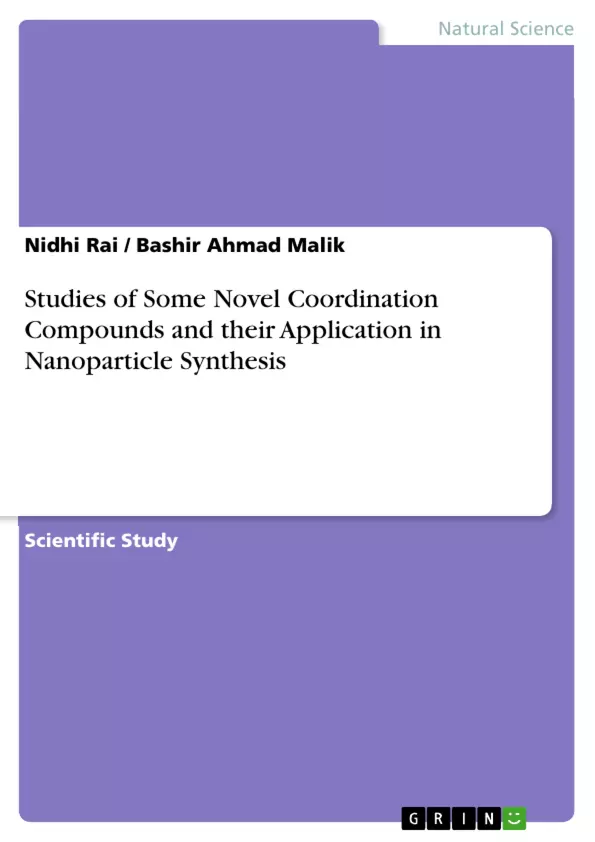Nanoscience is the study of phenomena exhibited by materials at atomic, molecular and macromolecular levels, of dimensions ranging from a few nanometres to less than a hundred nanometres. In chemistry, this size range has been associated with colloids, micelles, polymer molecules and similar structures. In physical and electrical engineering, nanoscience is often associated with quantum behaviour, and electron behaviour in nanoscale structures.
The area of research in the field of nanotechnology is as diverse as physics, chemistry, material science, microbiology, biochemistry and also molecular biology. The interface of nanotechnology in combination with biotechnology and biomedical engineering has emerged with the use of nanoscale structures in diagnosis, gene sequencing, and drug delivery. Nanoparticles have attracted great interest in recent years because of their unique chemical and physical properties, which are different from those of either the bulk materials or single atoms. Nanostructure materials have potential applications in ceramics, optoelectronics and catalysis.
Research on the synthesis of nanomaterials using metal complexes as precursors have been less reported. Application of metal complexes as precursors may be helpful to control the physical properties of metal nanoparticles. In the last few years, researchers have characterized the tunable properties by altering the nanostructure size, shape, and chemical composition and have developed reproducible strategies to make nanostructures of desired properties. It has been already proved that by controlling the size of the particle and manipulating surface structures of the semiconductor materials, the electronic, magnetic, mechanical, and chemical properties can be modified to suit a wide range of device application in many fields. The present book deals with the synthesis of Schiff base complexes of Cd(II), Zn(II) and Hg(II) with different sulphur containing ligand and preparation of metal sulphide nanoparticle by the thermal decomposition of complex precursor. During this academic journey four new sulphur containing ligands and their thirty complexes were synthesized. These ligands and complexes were characterized by spectroscopic methods like UV-Vis, FT-IR, 1H-NMR, 13C-NMR, 2D-NMR, FAB-MS / ESI-Ms spectra.
Inhaltsverzeichnis (Table of Contents)
- CHAPTER-1: Introduction
- Introduction
- Schiff Base Complexes
- Nanotechnology
- Biological studies of Schiff base complexes and nanoparticles
- Selection of ligand and Aim of the study
- References
- CHAPTER-2: Materials and methods
- Materials
- Analytical methods and Physical Measurements
- Biological studies
- References
- CHAPTER-3: Synthesis, Characterization and biological activity of 1-benzylidene/ 1,4-dibenzylidenethiosemicarbazide complexes of Zn(II), Cd(II) and Hg(II): New single source precursor in pyrolytic synthesis of metal sulphide nanoparticle
- Introduction
- Experimental
- Results and Discussion
- Antibacterial screening
- References
- CHAPTER- 4: Synthesis, characterization and biological activity of 1,4-bis((1H-pyrrol-2-yl)methylene)thiosemicarbazide complexes of Zn(II), Cd(II) and Hg(II): New single source precursor in metal sulphide nanoparticle synthesis
- Introduction
- Experimental
- Results and Discussion
- Antibacterial Screening
- References
- CHAPTER- 5: Synthesis, Characterization and biological Tetraethylthiuram disulphide complexes of Zn(II), Cd(II) and Hg(II): New single source precursor in pyrolytic synthesis of metal sulphide nanoparticle
- Introduction
- Experimental
- Results and Discussion
- Antibacterial Screening
- References
Zielsetzung und Themenschwerpunkte (Objectives and Key Themes)
The study focuses on the synthesis, characterization, and biological activity of novel coordination compounds, specifically Schiff base complexes of Zn(II), Cd(II), and Hg(II). The primary objective is to explore these complexes as single-source precursors for the pyrolytic synthesis of metal sulfide nanoparticles. The study also investigates the antibacterial activity of the synthesized complexes and nanoparticles.
- Synthesis and Characterization of Schiff Base Complexes
- Application of Complexes as Precursors for Nanoparticle Synthesis
- Investigation of the Antibacterial Properties of Complexes and Nanoparticles
- Exploration of the Potential of Schiff Base Complexes in Coordination Chemistry
- Contribution to the Field of Nanomaterials Research
Zusammenfassung der Kapitel (Chapter Summaries)
Chapter 1 provides an introduction to coordination chemistry, focusing on Schiff base complexes and their applications in various fields. It also introduces the concept of nanotechnology and the potential of metal complexes as precursors for nanoparticle synthesis. Chapter 2 details the materials and methods used throughout the study, including analytical techniques, physical measurements, and biological assays. Chapter 3 focuses on the synthesis, characterization, and biological activity of 1-benzylidene/1,4-dibenzylidenethiosemicarbazide complexes of Zn(II), Cd(II), and Hg(II). This chapter investigates the use of these complexes as single-source precursors for the synthesis of metal sulfide nanoparticles. Chapter 4 delves into the synthesis, characterization, and biological activity of 1,4-bis((1H-pyrrol-2-yl)methylene)thiosemicarbazide complexes of Zn(II), Cd(II), and Hg(II), exploring their potential in metal sulfide nanoparticle synthesis. Chapter 5 examines the synthesis, characterization, and biological activity of Tetraethylthiuram disulfide complexes of Zn(II), Cd(II), and Hg(II), highlighting their application as single-source precursors for the synthesis of metal sulfide nanoparticles.
Schlüsselwörter (Keywords)
The main keywords and focus topics of the text include coordination chemistry, Schiff base complexes, nanoparticle synthesis, metal sulfide nanoparticles, antibacterial activity, single-source precursors, bioinorganic chemistry, medicinal chemistry, nanomaterials, and analytical techniques.
- Quote paper
- Nidhi Rai (Author), Bashir Ahmad Malik (Author), 2018, Studies of Some Novel Coordination Compounds and their Application in Nanoparticle Synthesis, Munich, GRIN Verlag, https://www.grin.com/document/386560



